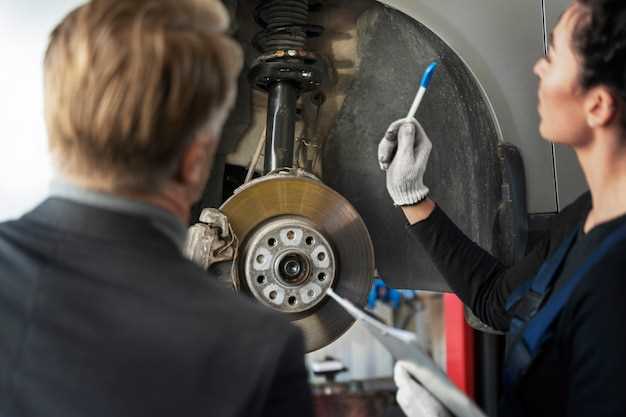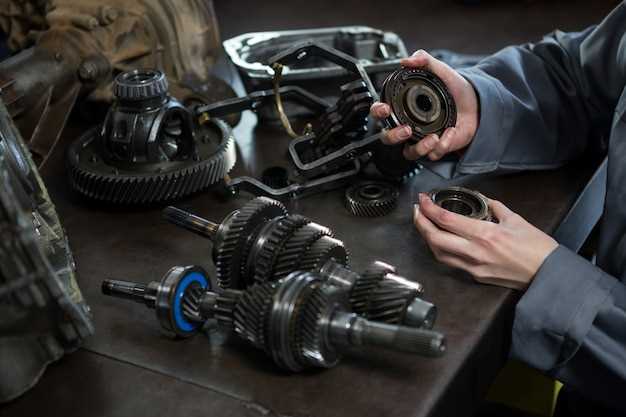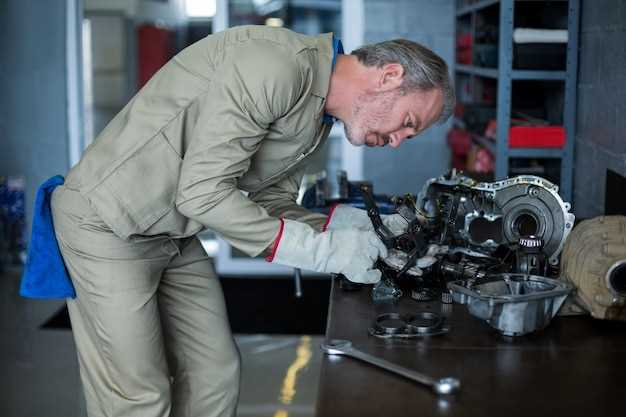

Regular maintenance of steering components is crucial for the safe and efficient operation of any vehicle. Proper lubrication not only ensures smooth steering but also extends the lifespan of essential parts. Neglecting this critical maintenance task can lead to increased wear, costly repairs, and even compromise vehicle safety. Understanding how to lubricate steering components correctly is an essential skill for every vehicle owner and technician.
In this guide, we will explore the various types of steering systems, the components involved, and the best practices for lubrication. From power steering systems to traditional mechanical setups, each system has unique requirements that must be adhered to for optimal performance. We will highlight the recommended lubricants, tools needed, and step-by-step instructions to ensure that you’re equipped to tackle this maintenance task effectively.
Whether you’re an experienced mechanic or a DIY enthusiast, knowing how to maintain your steering components properly is vital. This guide aims to demystify the lubrication process and provide you with the confidence to keep your steering system in top shape. Prioritizing regular maintenance will not only enhance driving comfort but also improve the overall safety of your vehicle, ensuring a smooth ride for years to come.
Choosing the Right Lubricant for Steering Systems

Proper maintenance of steering systems is essential for ensuring optimal vehicle performance and safety. Selecting the right lubricant plays a critical role in this process. The choice of lubricant impacts the smooth operation of various steering components, such as the power steering pump, rack and pinion, and universal joints.
When choosing a lubricant, consider the manufacturer’s specifications listed in the vehicle’s manual. Different steering systems may require specific types of fluids, such as automatic transmission fluid (ATF) or dedicated power steering fluid. Using the incorrect type can lead to reduced efficiency and even component failure.
Viscosity is another important factor. The lubricant must have the appropriate viscosity to ensure it flows freely at varying temperatures and provides adequate protection against wear. A viscosity grade that suits the climate conditions where the vehicle operates is crucial for maintenance.
Additionally, it’s important to choose lubricants that contain additives designed to enhance performance. Anti-wear additives help reduce friction between moving parts and extend the lifespan of the steering components. Rust inhibitors can also be beneficial, combating moisture that could otherwise lead to corrosion.
Furthermore, check if the lubricant is compatible with any other fluids previously used in the steering system. Mixing different types of fluids can cause chemical reactions that may compromise the system’s integrity.
In conclusion, selecting the right lubricant for steering systems is vital for effective maintenance. Adhering to manufacturer specifications, considering viscosity, and ensuring compatibility will help keep steering components functioning smoothly and reliably.
Step-by-Step Process for Lubricating Steering Components
Ensuring proper maintenance of your vehicle’s steering components is essential for safe and smooth operation. Follow these steps to effectively lubricate steering components.
Step 1: Gather Necessary Tools and Materials
Before you begin, collect all required tools: a grease gun, appropriate lubricant, rags for cleaning, and protective gloves. Ensure you have access to the steering system, whether it’s on a vehicle lift or jack stands.
Step 2: Inspect Steering Components
Conduct a visual inspection of the steering components including tie rods, ball joints, and the steering rack. Look for signs of wear or damage such as rust, cracks, or leaks. Address any issues before applying lubricant.
Step 3: Clean the Grease Fittings
Using a clean rag, wipe away any dirt or debris from the grease fittings. This prevents contaminants from entering the lubrication system during application.
Step 4: Apply Lubricant
Attach the grease gun to the fitting. Compress the trigger slowly to dispense the lubricant. Monitor the flow and avoid over-packing, which can cause pressure buildup and component damage. Ensure all accessible fittings receive adequate lubrication.
Step 5: Check for Proper Distribution
After applying lubricant, move the steering wheel back and forth to help distribute the grease throughout the components. This ensures that all moving parts are adequately lubricated and reduces friction.
Step 6: Inspect for Excess Lubricant
After lubricating, check for any excess grease that may have emerged from the fittings. Wipe away any excess with a clean rag to prevent contamination and mess.
Step 7: Document Maintenance
Record the date and details of your lubrication process in a maintenance log. Keeping track of when and what has been serviced ensures timely future maintenance and can extend the life of your steering components.
By following this detailed process, you can maintain the efficiency and safety of your vehicle’s steering system. Regular lubrication is key to preventing wear and ensuring optimal performance.
Common Mistakes to Avoid When Lubricating Steering Parts

Proper maintenance of steering components is crucial for ensuring a safe and smooth driving experience. However, many individuals make common mistakes during the lubrication process that can lead to premature wear and malfunction. One frequent error is using the wrong type of lube. Always ensure that the lubricant you choose is specifically designed for steering systems, as using generic oils can compromise the functionality of the parts.
Another common mistake is over-lubricating. Excessive lubrication can attract dirt and debris, which can cause more harm than good. It’s vital to apply the right amount of lube, following the manufacturer’s guidelines to avoid creating a mess and reducing efficiency.
Neglecting to clean the surfaces before lubrication is another oversight. Dirt and old grease can impede the effectiveness of the new lubricant, leading to inadequate protection and possible damage. Always clean the components thoroughly before applying fresh lube.
Ignoring regular maintenance schedules can also result in significant issues. Steering components require routine inspection and lubrication to function optimally. Creating a maintenance schedule ensures that lubrication is applied consistently and appropriately.
Finally, failing to inspect for signs of wear or damage while lubricating is a critical error. Always take the opportunity to check for any deterioration in the parts that may affect their performance. Addressing these issues immediately can prevent further complications and extend the life of the steering system.







